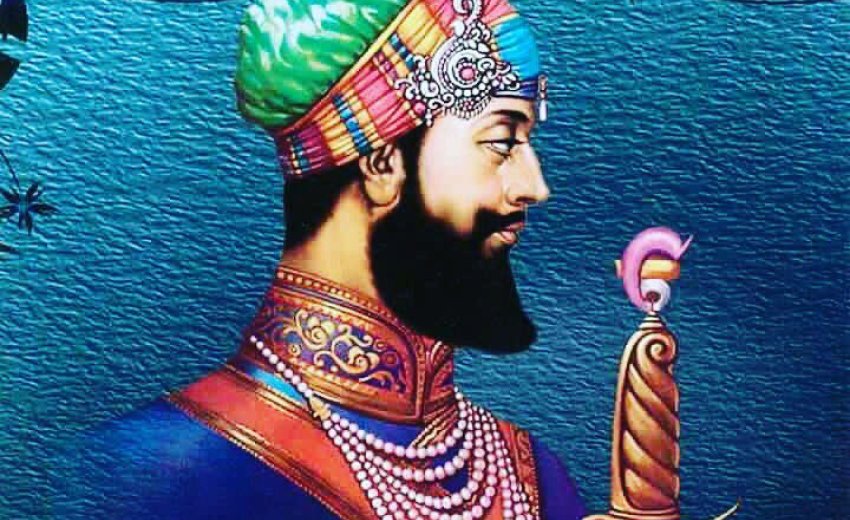Miri-Piri
Miri-Piri has been a part of the Sikh religion since the 17th century. It began with Guru Hargobind, the sixth Guru of Sikhism, on June 12, 1606. When Guru Hargobind became the Guru after his father's martyrdom, he fulfilled a prophecy made by the revered Sikh figure Baba Buddha. This prophecy stated that the Guru would have both spiritual and temporal power.
Guru Hargobind represented these two powers with the symbolic swords of Miri and Piri. These swords, along with a central khanda, are tied together, signifying the importance of combining both worldly (political) and spiritual authority. This union of action guided by the spiritual heart is seen as the ultimate purpose and meaning in the world: spirituality.
Reverence for Sikhs
The Sikhs played a vital role in India's history, contributing bravely to both World Wars and the partition of India and Pakistan, despite being a small percentage of the population. Their loyalty was so respected that the British even suggested an independent Sikh state, which was declined in favour of unity of India. However, even after India gained independence in 1947, Sikhs still struggled for their political rights, leading to the 1984 attack on the Harimander Sahib and the Akal Takhat. This event deeply affected the Sikh community, with brutal violence, atrocities, and a media blackout causing outrage. This tragic incident sparked a renewed sense of Sikh identity among the diaspora worldwide, highlighting the importance of recognizing their contributions and struggles.
The message
As Sikhs, it's crucial to remember and understand the dark events of the Sikh Holocaust in 1984 to prevent such tragedies from happening again. We should draw inspiration from Guru Hargobind's concept of Miri and Piri to protect our religious and political identity.
As per an article by Dr. Harjot Kaur Singh, the Siri Singh Sahib emphasized that the Akal Takhat willingly sacrificed itself to safeguard the holiness of the Harimander Sahib, showing how spiritual values must come before political power. As Sikhs, it's crucial to grasp this balance, where we prioritize our spiritual growth before pursuing worldly authority. When each Sikh focuses on developing spirituality first, temporal influence can follow. By dedicating ourselves to spiritual practice, our political identity gains strength, allowing Sikhs to progress on the Khalsa path and work towards fulfilling the Guru's vision of Khalsa Raj.
*Based on an article written by Dr Harjot Kaur Singh, published in sikhdharma.in on 21st May 2009
Miri-Piri
Miri-Piri has been a part of the Sikh religion since the 17th century. It began with Guru Hargobind, the sixth Guru of Sikhism, on June 12, 1606. When Guru Hargobind became the Guru after his father's martyrdom, he fulfilled a prophecy made by the revered Sikh figure Baba Buddha. This prophecy stated that the Guru would have both spiritual and temporal power.
Guru Hargobind represented these two powers with the symbolic swords of Miri and Piri. These swords, along with a central khanda, are tied together, signifying the importance of combining both worldly (political) and spiritual authority. This union of action guided by the spiritual heart is seen as the ultimate purpose and meaning in the world: spirituality.
Reverence for Sikhs
The Sikhs played a vital role in India's history, contributing bravely to both World Wars and the partition of India and Pakistan, despite being a small percentage of the population. Their loyalty was so respected that the British even suggested an independent Sikh state, which was declined in favour of unity of India. However, even after India gained independence in 1947, Sikhs still struggled for their political rights, leading to the 1984 attack on the Harimander Sahib and the Akal Takhat. This event deeply affected the Sikh community, with brutal violence, atrocities, and a media blackout causing outrage. This tragic incident sparked a renewed sense of Sikh identity among the diaspora worldwide, highlighting the importance of recognizing their contributions and struggles.
The message
As Sikhs, it's crucial to remember and understand the dark events of the Sikh Holocaust in 1984 to prevent such tragedies from happening again. We should draw inspiration from Guru Hargobind's concept of Miri and Piri to protect our religious and political identity.
As per an article by Dr. Harjot Kaur Singh, the Siri Singh Sahib emphasized that the Akal Takhat willingly sacrificed itself to safeguard the holiness of the Harimander Sahib, showing how spiritual values must come before political power. As Sikhs, it's crucial to grasp this balance, where we prioritize our spiritual growth before pursuing worldly authority. When each Sikh focuses on developing spirituality first, temporal influence can follow. By dedicating ourselves to spiritual practice, our political identity gains strength, allowing Sikhs to progress on the Khalsa path and work towards fulfilling the Guru's vision of Khalsa Raj.
*Based on an article written by Dr Harjot Kaur Singh, published in sikhdharma.in on 21st May 2009
